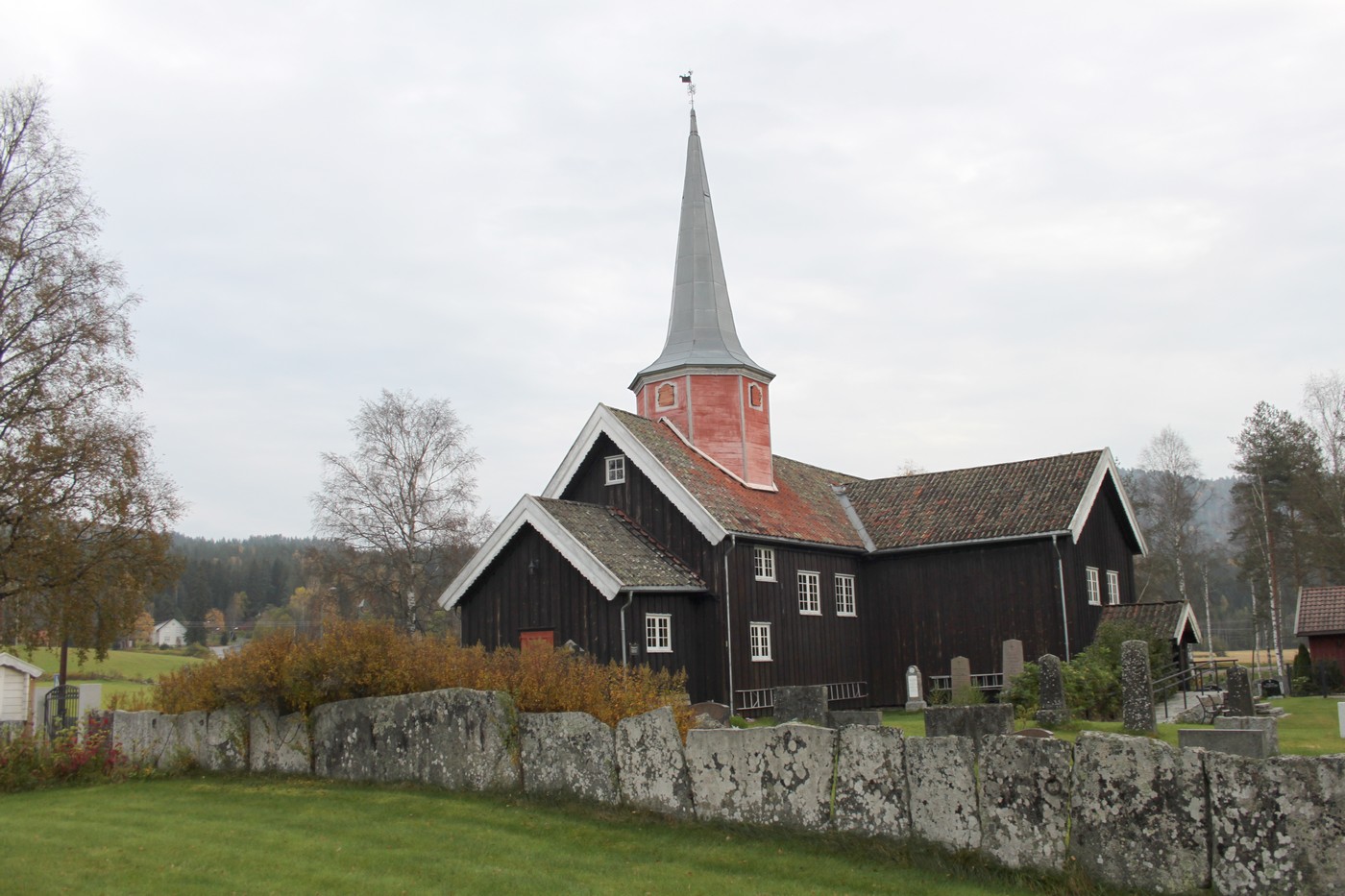Opening hours
Opening hours during the summer season (June 29 to August 6) Every day (except Monday and Saturday) 12 AM to 5 PM
Opening hours during the Medieval Week: Every day from 12 AM to 5 PM Note! Closed for tour Thursday July 26th due to preparatons for the concert in the evening Consortium Vocale Oslo - “Olavshymner” 7PM
Admission fee:
Adults: NOK 35, -
Children (under 15 years): Free
Groups of 10 and more: NOK 30, - per person
For more information contact the church warden in Flesberg +47 31 2 28 31 9AM to 3PM
 The church was originally a stave church from the late 1100s. The reconstruction in 1735 transformed the church into a cruciform church, but the stave church originally formed what is now the nave. The church tower is in the same position as when the church was first built, and has the original colors, English-red with gray-white corner edges. During restoration work between 1955 and 1965, two portals with carvings from 1250’s were discovered.
The church was originally a stave church from the late 1100s. The reconstruction in 1735 transformed the church into a cruciform church, but the stave church originally formed what is now the nave. The church tower is in the same position as when the church was first built, and has the original colors, English-red with gray-white corner edges. During restoration work between 1955 and 1965, two portals with carvings from 1250’s were discovered.
One portal is in the porch around the front door. In the nave (the original stave church) remains of ornaments and animal figures were discovered when removing paint. These decorations are from the church’s early period
One portal is in the porch around the front door. In the nave (the original stave church) remains of ornaments and animal figures were discovered when removing paint. These decorations are from the church’s early period
A 30 cm. measure stick (halvalen-mål) is hanging on the door in the porch. This was originally placed there as an announcement about the proper diameter of timber. Church-goers would then check whether their own measure stick was correct.
The cemetery is surrounded by large stone slabs. These were transported in winter by horse from the farm Haukeli at the western side of the river Numedalslågen.
In a painting by Niels Hansen Bragernes from 1701, we see that the cemetery had the same enclosure at that time. This painting is believed to be the oldest existing painting of a stave church.
The stone slabs in cemetery fence have iron rings for tethering the horses. Each farmer had his own place, as stated in the inscriptions on the rings and stones. The oldest inscription is from 1661.
Freestanding stones outside the cemetery had the same function. The area around these stones was called the horse yard. This was the village's main meeting place in addition to the three annual folk-meetings.
After mass, members of the congregation could come forward with their announcements. At a defined time in the autumn (Riarmesse) the mountain hut (shieling) milkmaids were honored for their work during the summer. There were also a gauntlet and an execution site.
Image gallery
(Click on an image to see a larger version)












